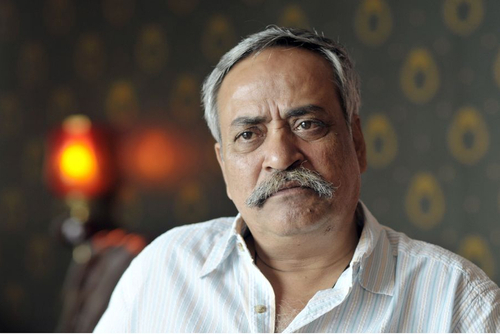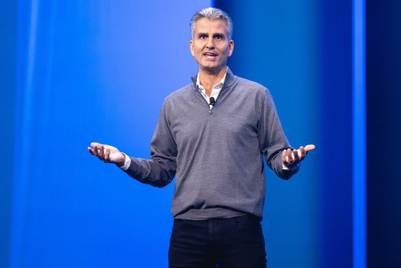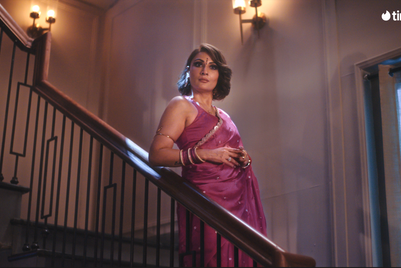.jpg&h=570&w=855&q=100&v=20250320&c=1)
There was a time when masculinity was imagined as quiet and unshakable, a presence that neither sought attention nor asked to be explained. It was the father who spoke sparingly at the dinner table, the boss whose word was final, the Bollywood hero who shed no tears. Masculinity was supposed to be absorbed, not displayed.
In the age of the algorithm, silence disappears without a trace. Masculinity has shifted into something else entirely, a carefully staged act, rehearsed for the front-facing camera and broadcast across the endless glow of our screens.
From gym selfies to skincare tutorials, from playlists that signal sensitivity to confessional LinkedIn posts about burnout, men are performing themselves with an intensity that would have seemed unthinkable even a decade ago.
From silent strength to selfie masculinity
Masculinity, once defined by what was left unsaid, has become a vocabulary of aesthetics, captions, and hashtags. And this shift is not simply about gender roles. It reveals how identity itself has become a form of cultural currency, curated, packaged, and monetised for public consumption.
All of us see this transformation play out on our feeds every day. Platforms reward visibility over privacy, spectacle over subtlety.
Men who once consumed silently now create entire personae out of their choices. The finance guru promises to change your portfolio in under a minute. The wellness enthusiast insists that cold plunges and mindfulness are the secret to resilience. The sneaker collector treats limited editions as both fashion and capital. The doting father spins parenthood into an aspirational lifestyle brand.
These archetypes are instantly recognisable; each one designed for cultural approval. Men are no longer just living their identities, they are producing them as content, auditioning daily for validation from followers and strangers alike.
At the heart of this lies a deeper unease. The traditional scripts of masculinity no longer satisfy. The old archetype of silent strength has been unsettled by feminism, by shifting professional dynamics, and by the expectation that men too must voice their emotions.
Identity becomes performance
Across the world, the rejection of toxic masculinity has created room for vulnerability and tenderness to be reframed as qualities of strength. In India, the shift feels even more pronounced.
Leading men on screen are as likely to cry as they are to fight. Young professionals are experimenting with fashion and grooming in ways their fathers rarely dared.
The rise of homegrown grooming brands such as Beardo and The Man Company is built on this hunger for new scripts of manhood, where ruggedness coexists with refinement and confidence blends with self-care. Masculinity no longer hides in the shadows. It demands recognition.
In this theatre, brands play the dual role of stage and prop. Nike is not merely selling shoes, it is selling a creed of relentless discipline. Dove Men+Care recasts strength as empathy. Skincare brands, once tentative in addressing men, now confidently market serums and routines for him. Alcohol companies, long the keepers of swagger, have pivoted to a cooler restraint.
These are not just campaigns, they are choreography. Brands are equipping men with the cues, props, and scripts they need to perform in public. And in India, where a new middle class is moving fast to craft its image, the opportunities are immense.
Yet so are the risks. Brands that continue to rely on hollow archetypes such as the exaggerated alpha or the shallow metrosexual risk alienating men who increasingly see themselves as layered and self-authored.
Brands as stage managers of manhood
The danger is that performativity cuts both ways. Just as men are learning to treat their own identities as staged, they are also learning to see through the performances of brands. We can all sense when a campaign claims to embrace authenticity but rings false.
The very word performative has become an accusation, suggesting that what is shown is not what is lived. At the same time, performance has opened men to new possibilities. It has expanded the categories they explore, from mental wellness apps and therapy platforms to boutique fashion labels and fitness tech.
Each of these becomes another space for masculinity to be enacted. For brands, the task is to make sure the roles they offer are not flimsy costumes but identities that men can inhabit with conviction.
Beyond the mask: Authenticity or empty costume?
The performative male is not a fleeting trend. It is the shape masculinity takes in a culture of constant display. For marketers, the implication is clear.
It is time to leave behind tired stereotypes and instead study the diverse roles men are experimenting with, whether the mindful professional, the conscious parent, the urban nomad, or the disciplined hustler. Each identity is an opening for brands to engage.
The lesson is not to dismiss performance as vanity but to understand it as a search for belonging and aspiration. The brands that will stand out are not those that hand men another mask but those that help them write stories they can believe in.
In this new theatre, masculinity is a drama unfolding daily on all our feeds, and brands are no longer just sponsors in the audience. They are part of the direction itself, shaping the lights, supplying the costumes, and helping decide how the play of being a man is staged for the world to watch.

- Madhukar Kumar is a trend spotter, communications strategist, and founder of Grey Cell PR.




.jpg&h=334&w=500&q=100&v=20250320&c=1)
.jpg&h=334&w=500&q=100&v=20250320&c=1)
.jpg&h=334&w=500&q=100&v=20250320&c=1)
.jpg&h=334&w=500&q=100&v=20250320&c=1)




.jpg&h=268&w=401&q=100&v=20250320&c=1)


.jpg&h=268&w=401&q=100&v=20250320&c=1)
.jpg&h=268&w=401&q=100&v=20250320&c=1)

.jpg&h=268&w=401&q=100&v=20250320&c=1)

